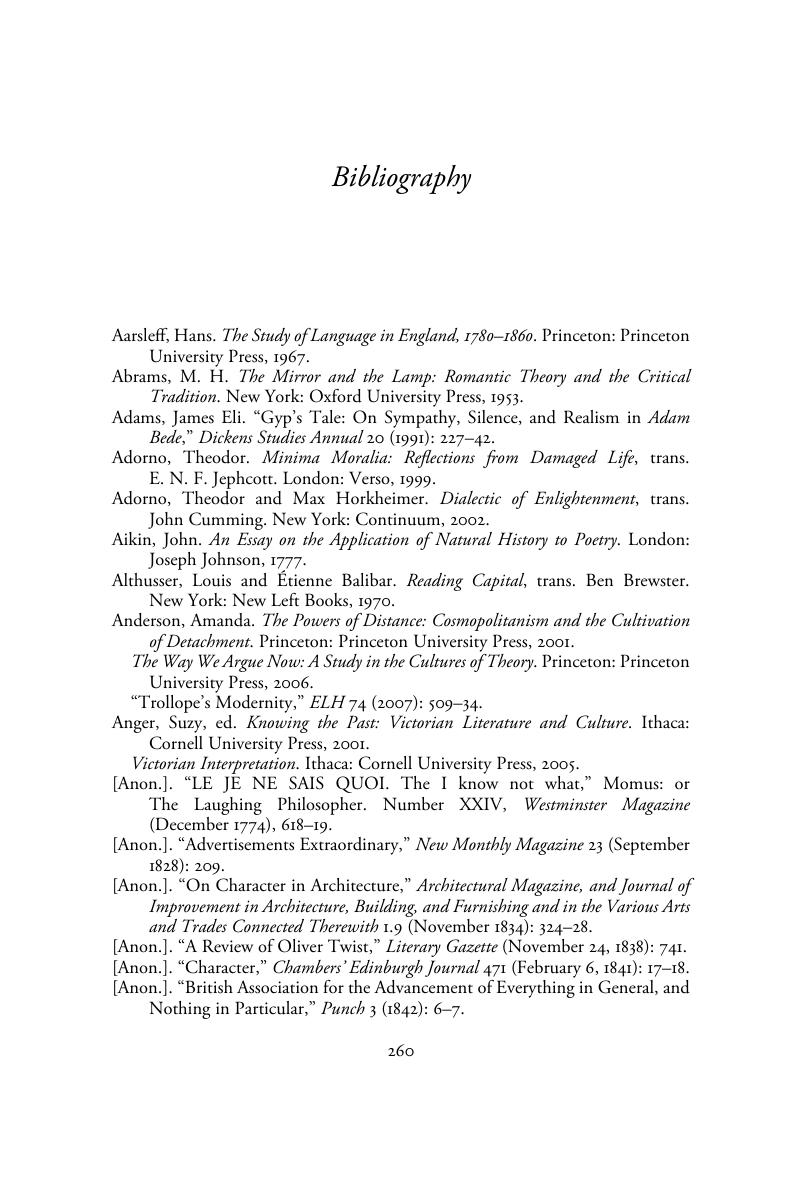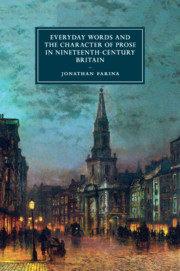Book contents
- Everyday Words and the Character of Prose in Nineteenth-Century Britain
- Cambridge Studies in Nineteenth-Century Literature and Culture
- Everyday Words and the Character of Prose in Nineteenth-Century Britain
- Copyright page
- Dedication
- Dedication
- Contents
- Acknowledgments
- Preface
- Abbreviations
- Chapter 1 Darwin’s View from Todgers’s
- Chapter 2 Inductive “Attentions”
- Chapter 3 “Our skeptical as if”
- Chapter 4 “Something” in the Way Realism Moves
- Chapter 5 “Whoever explains a ‘but’”
- Afterword: The Fate of Character and the Philology of Everyday Life
- Notes
- Bibliography
- Index
- Cambridge Studies in Law and Society
- References
Bibliography
Published online by Cambridge University Press: 14 September 2017
- Everyday Words and the Character of Prose in Nineteenth-Century Britain
- Cambridge Studies in Nineteenth-Century Literature and Culture
- Everyday Words and the Character of Prose in Nineteenth-Century Britain
- Copyright page
- Dedication
- Dedication
- Contents
- Acknowledgments
- Preface
- Abbreviations
- Chapter 1 Darwin’s View from Todgers’s
- Chapter 2 Inductive “Attentions”
- Chapter 3 “Our skeptical as if”
- Chapter 4 “Something” in the Way Realism Moves
- Chapter 5 “Whoever explains a ‘but’”
- Afterword: The Fate of Character and the Philology of Everyday Life
- Notes
- Bibliography
- Index
- Cambridge Studies in Law and Society
- References
Summary

- Type
- Chapter
- Information
- Publisher: Cambridge University PressPrint publication year: 2017



